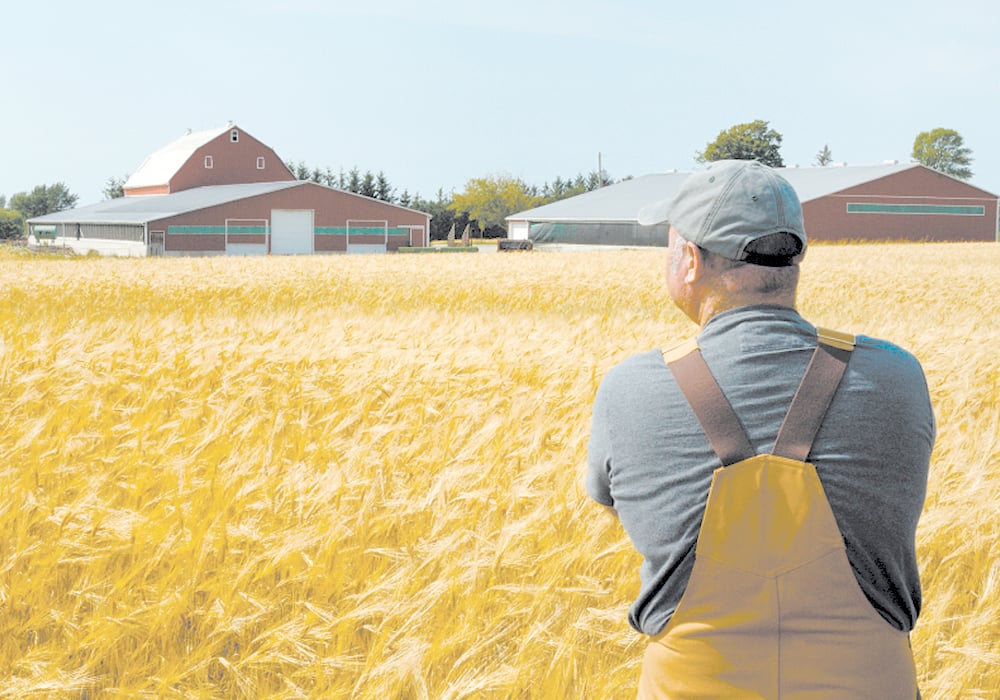Chartered banks and Farm Credit Canada have had a destructive impact on Canada.
FCC’s capitalization of large land-consolidating farms has resulted in a catastrophic decline in the number and per cent of citizens who own and manage a farm business.
Half a century ago, a high proportion, perhaps over half, of the kids in rural communities had entrepreneurial parents who owned their own business, such as a farm, a store, a trade or a profession.
Read Also

Worrisome drop in grain prices
Prices had been softening for most of the previous month, but heading into the Labour Day long weekend, the price drops were startling.
Now, most kids’ parents are merely wage-limited employees of large corporations or public agencies.
The dramatic turning point was in about 1994, when the chartered banks retroactively changed their standard lending terms to thousands of small businesses, ceasing to count goods inventory as being collateral for operating loans, and demanded loan repayment, consequently destroying good credit ratings.
The banks’ senior business lending executives ordered this in response to their embarrassing losses, first on loans to Third World governments, and then losses to Olympia and York, which had overleveraged its wealth, which was less than the bankers assumed it had, for building Toronto office towers and then got caught short of cash in a recession.
A friend of mine was representing an insurance company investor in creditor meetings and warned me the banks had gotten a taste for blood and “will come after you little guys next.”
They did this by changing the loan terms and then demanded loan repayments or real estate security. Hundreds of our brightest creative entrepreneurs likely could not meet the sudden new demands.
My bank manager assured me that my food processing company had done nothing wrong — just “the bank has changed.”
Since then, it is easier for entrepreneurs to obtain capital in the United States than in Canada. A graph presented by David Dodds, governor of the Bank of Canada in about 2010, showed that it was in the mid-1990s that Canada’s productivity growth rate fell behind the U.S.
Chartered banks and the FCC prioritize lending to large debtors to reduce administrative work by discarding as desk clutter their prior provision of working capital to small debt farm clients.
First, they selected only those farmers who hired accountants, and then ranked all by reported profitability. They systematically discarded the lower performers by denying renewals of annual operating loans, while selectively increasing funding to only a few growing farm businesses to acquire the lands of nearly all of the smaller debt farmers, as evidenced by thousands of bulldozed formerly vibrant farmyards.
Banks used the technique of discarding reported accrual adjustments for opening and ending payables, receivables and inventory by reclassifying the farmers and fishers who had less than $100,000 debt and did their own income tax reporting as “small businesses.” They then sent their annual accrued income statements to the small business computer in Toronto, which did not have spots in its templates to enter farmers’ and fishers’ reported accrual adjustments.
All other small businesses must report accrued income statements for income tax, whereas farmers and fishers are allowed to report cash basis income statements.
Every small debt farmer or fisher thus had false internal reporting by the banks of their income within the banks’ computers, resulting in computer-generated orders for prompt repayment of demand loans whenever an erroneous annual loss was miscalculated in the absence of accrual adjustments.
I experienced their false accounting and consequent denial of service, as later explained to me by four former loans officers and a bank manager.
Canadian chartered banks are also inept at lending to diverse small businesses, having chosen to abandon that competency to focus on lending to employees to purchase homes. Often a business’s employee can now get a loan to buy a house, while the employer cannot get a loan for the business. With lenders now absent, governments feel the need to distort markets with grants to some businesses.
Despite agriculture being a vibrant, diversifying and profitable industry, with many university graduates highly educated in both science and business management, most have no career route toward ownership of an agricultural business or farmland unless they were born into a family of the new landowning aristocracy that banks and the FCC selected for privilege with easy access to capital.
Our best educated in agriculture thus cannot become owners free to pursue their unique new business creativity.
My proposed solution is to mandate a new Profession of Business Lender, requiring lenders to firstly serve the needs of their clients, same as a professional dentist is required by code of ethics to cure and prevent pain instead of causing pain.
I also propose amendments to the FCC Act, the Bank Act and the Credit Union Act to mandate professionalism and equity of business lending service to all citizens regardless of scale of their finance requests.
This solution would use uniform charges per document as the primary income revenue to lenders, rather than the size of the loan, etc.
As well, a high percentage of the public’s savings held in banks must be lent back to the Canadian public in the form of small business loans and not sent elsewhere in the world or otherwise misdirected.
If the FCC cannot reform its culture to preferentially fund smaller scale farms and worker-owned large firms in order to rapidly increase the total number of active business owners it serves, then I would propose the crown corporation be cut up and gifted to the credit unions across Canada.
This would end its massive destruction of rural communities and of agricultural entrepreneurialism by its consolidation of farmland and livestock ownership into distant-owned corporations and fewer and fewer local business owners.
Concentrated ag industry owners now lobby government to find more labourers for dangerous work such as in swine pits, whereas lenders should have broadened finance to many owners who innovate to prevent danger and get their own work done.
Tillage and seeding implements are now so much wider and complex, requiring extra steel and hydraulic cost per foot of width because only large acreage farm businesses can justify the large debts that chartered banks and the FCC apparently set as their minimum desired requirements before providing any finance.
Very wide implements actually increase costs per acre, inclusive of tractor depreciation, fuel and wages, etc. , according to University of Minnesota economists.
We should also create new Entrepreneurs and Investors Credit Unions for open capital markets serving small and new enterprises to accelerate Canada’s productivity growth.
Grant Rigby farms near Killarney, Man.















